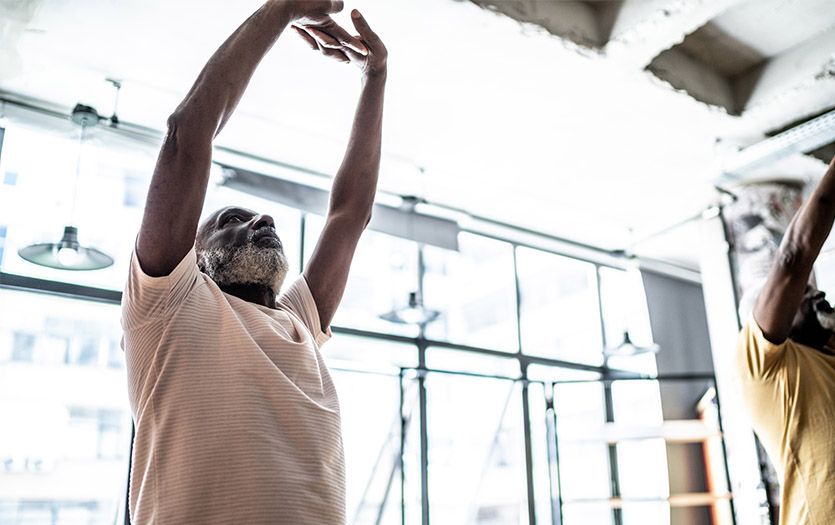
This post was written by Katrina Buchanan, PT, certified LSVT BIG clinician, Parkview Health.
The Lee Silverman Voice Treatment-BIG (LSVT BIG®) therapy program was designed to support individuals with Parkinson's disease (PD) in making larger, more purposeful movements. Although LSVT BIG was initially developed for people with PD, it has also proven beneficial for patients living with other neurological conditions such as stroke, multiple sclerosis (MS), cerebral palsy and traumatic brain injury.
How LSVT BIG can help
People with PD often move differently, with actions that are smaller and slower than usual. They may also struggle with mobility, dressing or with other activities of daily living. LSVT BIG can help retrain the body to make more intentional, coordinated movements for any activity. This includes "small motor" tasks like buttoning a shirt as well as "large motor" tasks like getting up from a seated position or maintaining balance while walking.
The treatment improves walking, self-care and other tasks by helping to "recalibrate" movements. It also teaches patients how and when to apply extra effort to produce larger motions that are more similar to typical movements.
Components of LSVT BIG
LSVT BIG treatment is delivered one-on-one and is tailored to each person's abilities and goals, allowing them to work toward milestones that are meaningful to them.
LSVT BIG uses personalized full-body exercises centered on the "think BIG!" principle. With guidance from an LSVT BIG-certified clinician, as part of prescribed physical or occupational therapy, patients are encouraged to exaggerate their movements to counteract their motor symptoms. Often, these movements feel strange or overly large at first, even though they are similar to how most people move. Over time, patients learn to see these bigger movements as normal.
Because PD makes it harder for patients to apply these principles consistently, treatment includes repetition and progressive challenges, as well as daily home practice and assignments to incorporate larger movements into everyday life. Therapy sessions are scheduled for four consecutive days per week, lasting a total of four weeks. Each session is one hour long and follows a specific protocol, which includes:
-
A daily sequence of exercises performed at maximum effort. These actions can consist of a combination of lying, seated or standing motions (based on the patient's level of function) that are stepping stones for improved balance, walking, posture, weight shifting and range of motion.
-
Functional component tasks are daily tasks chosen by the patient that are often necessary for completing other activities. These can range from picking up coins to getting in and out of a car.
-
Hierarchy tasks involve more complex, multi-step actions that replicate real-world activities for the patient. For example, these include practicing reaching, bending, and lifting motions in the order they are performed during tasks like doing laundry.
Throughout each session, the patient receives support and encouragement from their therapist to make tasks easier to accomplish, as well as recommendations to prevent the risk of injury.
Outcomes
Parkview's LSVT BIG team has observed improvements in patients' ability to perform routine daily tasks, enhanced walking and mobility, improved balance and overall quality of life.
The protocol's holistic approach addresses not only movement issues but also considers non-motor symptoms, including emotional and cognitive changes. Patients tend to be more confident when they complete the program and experience more joy in their everyday activities.
If you have questions or want to learn more about Therapy Services at Parkview Health, visit us here.



